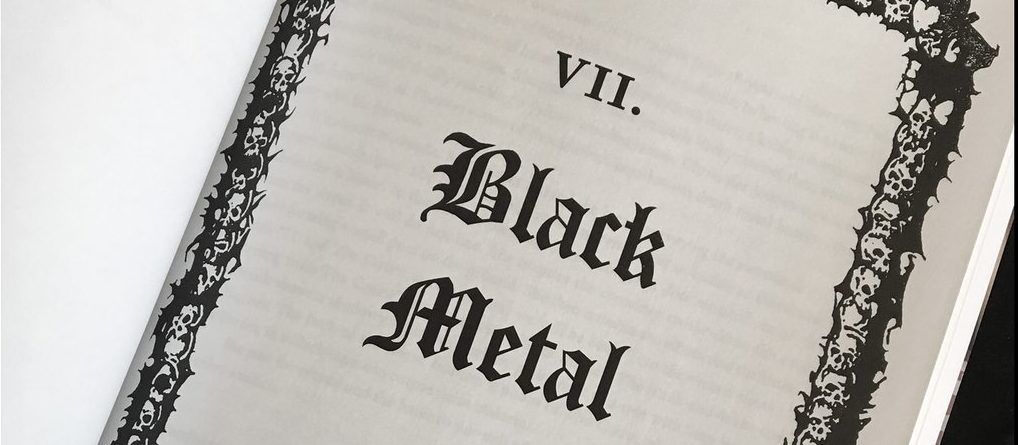
 It’s beginning to get cold and dark outside, so what better time of year for a reissue of Blood, Fire, Death: A Swedish Metal Story by Ika Johannesson and Jon Jefferson Klingberg? Originally released in 2011 as Blod, Eld, Död: En Svensk Metalhistoria by Alfabeta Bokförlag / Pocketförlaget, the Feral House edition, released early last month by Feral House, marks the English-language debut of this tome.
It’s beginning to get cold and dark outside, so what better time of year for a reissue of Blood, Fire, Death: A Swedish Metal Story by Ika Johannesson and Jon Jefferson Klingberg? Originally released in 2011 as Blod, Eld, Död: En Svensk Metalhistoria by Alfabeta Bokförlag / Pocketförlaget, the Feral House edition, released early last month by Feral House, marks the English-language debut of this tome.
It’s perfect that Feral House released this, actually, as Blood, Fire, Death rounds out a trilogy of books from the publisher on extreme music. First would be the seminal 1998 book, Lords of Chaos: The Bloody Rise of the Satanic Metal Underground by Michael Moynihan and Didrik Søderlind, and second is 2013’s massive tome, Black Metal: Evolution of the Cult, by Dayal Patterson.
When I say “rounds out,” I mean it, too. There’s a lot of speculation and spurious facts in Lords of Chaos, with a lot of the information and stories within seeming to be a bit more legend than fact, and it pretty much spins out about halfway through. On the other side of the coin is Black Metal, which is insanely informative, but there’s just so much there to get through. It’s an excellent read, but definitely for the advanced fan.
This means that Blood, Fire, Death works excellently as both an introduction to extreme Scandinavian metal, as well as setting straight some stories which have been circulating for decades now. As Johannesson says in the book’s introduction, “This is not the definitive history of Swedish metal. Instead, we’ve focused on bands, individuals, and phenomena which to various extents have propelled the scene forward.”
It’s basically a primer for the genre, introducing the reader to the main players and founders of black metal, the roots from which it grew, and the newer branches which still flower. The book’s been updated since its original publication, with new interviews and updates about the people interviewed previously, and Blood, Fire, Death ends up being a fascinating, involving read.

A few issues regarding changes from past tense to present tense and back again get a little confusing, but translation is as much art as it is a science, so it’s forgivable in the grander context. The same thing goes for a chapter on right-wing nationalism and Nazi ideology in the genre, which is rather short and perfunctory, despite having become a major point of contention over the last few years. Case in point: Talib Kweli canceled a concert near me because the club he was going to perform at had also booked Taake.
Because nobody’s really willing to speak on the record about it, it leads to a lot of folks kind of justifying it as just being another shocking things these musicians do or did, rather than any of the musicians involved in use of swastikas or Sieg Heil-ing saying specifically as to why they did what they did. Its absence would’ve been notable, obviously, but the inclusion as it is doesn’t definitively answer any questions.
That said, Johannesson and Klingberg do manage to get quite a few people to speak on the record for Blood, Fire Death, and the interviews with otherwise recalcitrant subjects — especially the friends and family members of such legendary characters as Pelle “Dead” Ohlin and Bathory’s Quorthon — give the reader far clearer and more full pictures of these people, turning them from two-dimensional characters into humanized individuals.
Blood, Fire, Death is available now from Feral House.





1 Comment